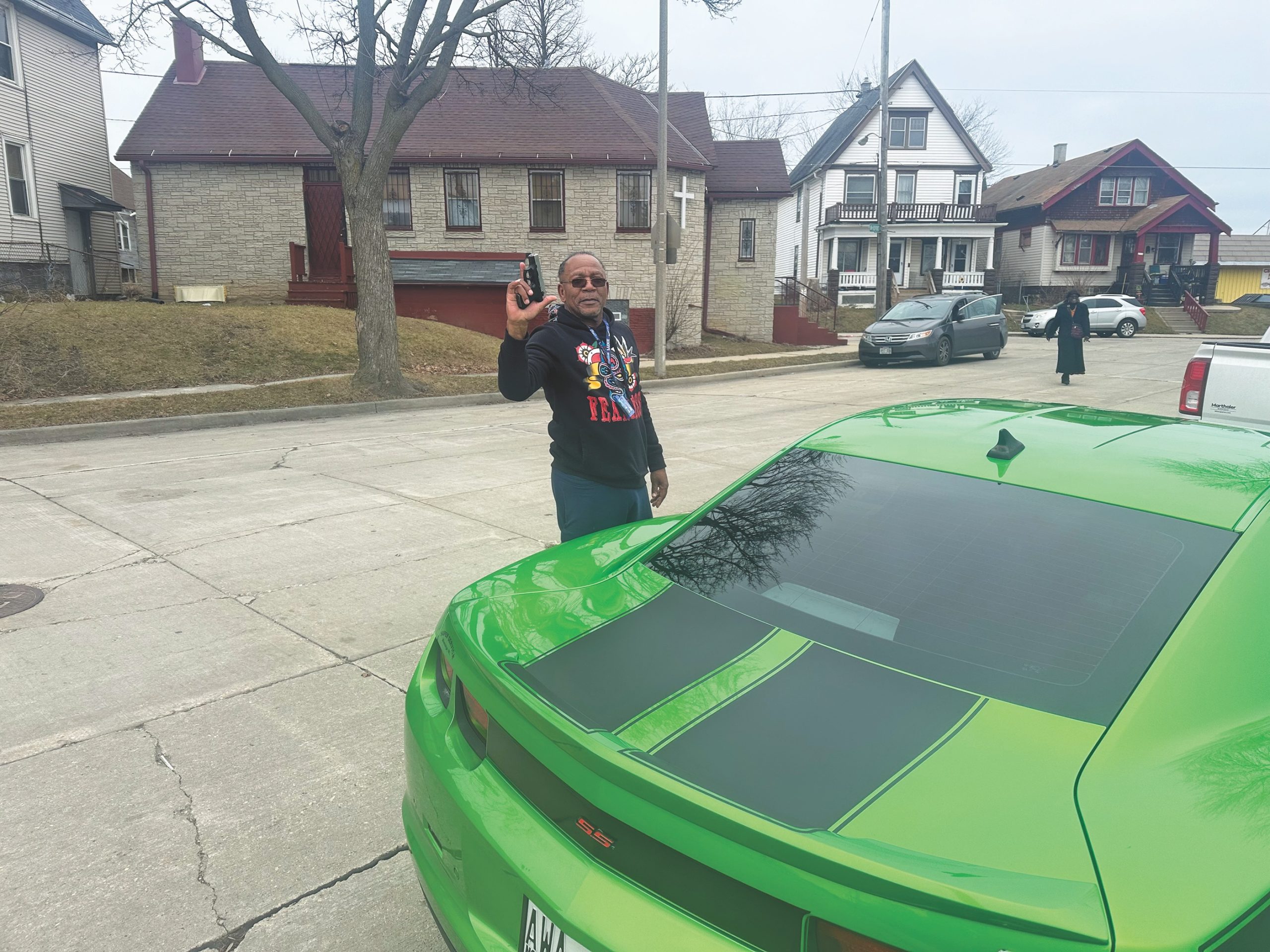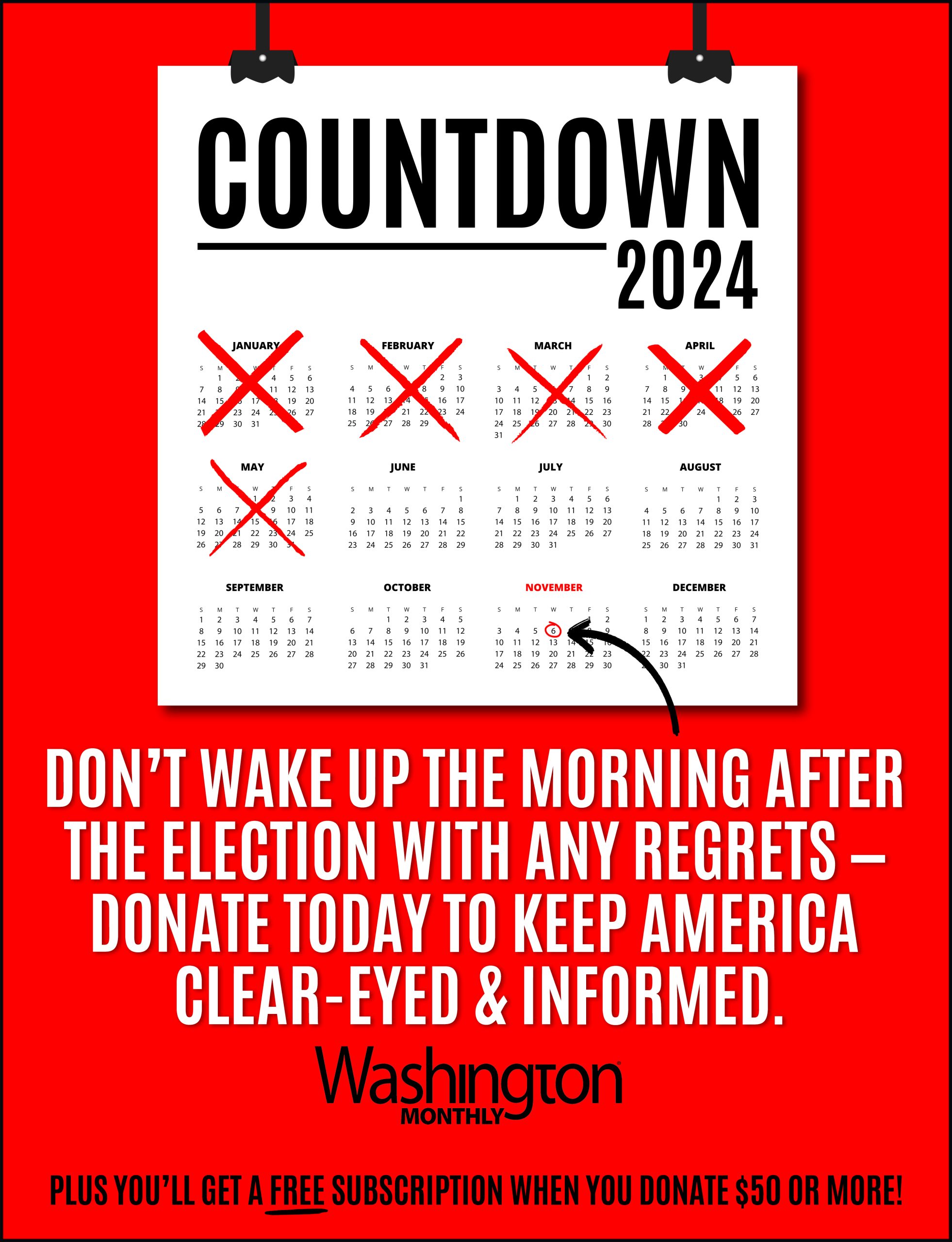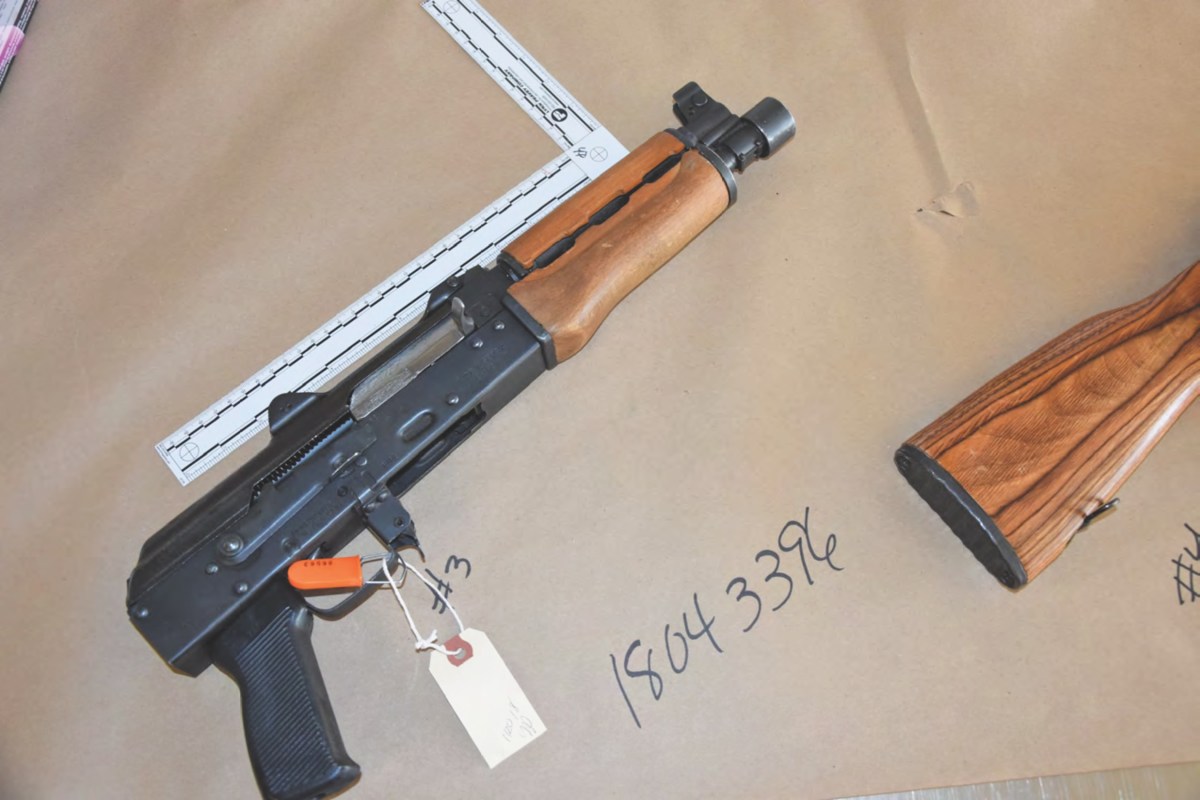As a TV flickered inside 13-year-old Sandra Parks’s bedroom in the heart of Milwaukee, a series of flashes from a gun muzzle lit up the area just outside. Then the gunman ran off, having missed his target.
Sandra took the stray bullet “like a soldier,” her sister recalls. She walked into another room and simply stated, “Mama, I’m shot.” The fire department arrived within minutes to render medical aid, but Sandra—a promising writer and an old soul, known for chiding other children to settle down in class—died the same night, November 19, 2018.
The shooting made national news because of a striking coincidence. Two years prior, Sandra had won third place in the city’s annual Martin Luther King Jr. essay contest for decrying the same form of violence that would claim her life. “In the city in which I live, I hear and see examples of chaos almost everyday,” she wrote. “Little children are victims of senseless gun violence.”
By the time Milwaukee homicide detectives sat Isaac Barnes down in Room 425C at police headquarters before sunrise the next day, they had already seen video surveillance of the fatal shots and had a witness placing him at the scene. Still, the detectives hoped to learn one thing about the shooting. He had fired blindly into a house and killed a child. Why?
Barnes pleaded the Fifth in the interview room, depriving the community of answers, at least for the moment. But after covering shootings like this one for decades, I’ve found that there is a far more important question police and policy makers are failing to ask.
How?
Specifically, how did an AK-47-style weapon find its way into the hands of Barnes, a convicted felon who wasn’t legally allowed to own it? Behind this shooting, and thousands more across America, there is an unseen accomplice: the seller. A frequently cited study by the Bureau of Alcohol, Tobacco, Firearms and Explosives found that 90 percent of guns used in crimes can be traced to just 5 percent of firearms dealers. Often, it’s white dealers in the comparatively affluent suburbs who are illegally selling weapons to convicted felons in the so-called inner city. Police have no trouble going after those dealers when one of their own is shot. In 2015, for instance, two Milwaukee officers won a $6 million judgment against a suburban dealer who negligently sold the handgun used to wound them. It should be simple for regular citizens, like Sandra’s family, to seek accountability from the suppliers of weapons used to kill or maim their loved ones—right?

Wrong. It used to be much easier to get information about crime guns when I was doing it in the 1990s and early 2000s. But in 2003, Republicans in Congress, pushed by National Rifle Association lobbyists, made it so that any “trace” information about crime guns could not be released to the public. They stepped up their efforts to protect the gun industry two years later, granting dealers and manufacturers blanket immunity (with a few exceptions) from civil suits. Not only do these rules prevent victims of gun crime from seeking compensation, they also leave us blind when it comes to crafting solutions. Academics can’t use this data to study how guns end up in criminals’ hands; mayors can’t obtain it to figure out how to make their cities safer. The Biden administration has taken steps in recent years to release more information about problem gun shops, and a series of lawsuits has challenged restrictions on trace information. But until Congress decides to protect the public and changes the law, weapons will continue to flow unchecked to America’s streets.
Shortly after the shooting of Sandra Parks, I set out to answer that question of “how.” I wasn’t prepared for how much hassle would ensue, because when I cut my teeth as a crime reporter in Milwaukee, my hometown, getting information about the origin of a gun was comparatively easy. In my first big story for the Journal Sentinel, in 1996, I obtained police records showing that the AK-47 that was used in a drive-by shooting that claimed the life of another 13-year-old girl, Laquann Moore, had originally been purchased by a convicted felon at a local gun store.
In early 2019, I asked the Milwaukee Police Department for information about the gun that took Sandra’s life. The police flatly denied the request. In order to trace a gun, local law enforcement sends a request to the ATF, which compares the firearm’s markings to a national archive of distribution and sales. Because of the laws passed in the 2000s, the federal agency must provide these trace reports to police departments confidentially, and only for criminal investigations. Giving me the report would jeopardize Milwaukee cops’ ability to trace any future guns, they told me.
It didn’t feel right that the public should be denied such basic information. So I obtained pro bono help from Godfrey & Kahn, a law firm experienced in representing journalists. When the police heard from my lawyer, Daniel Narvey, they said they had made a mistake: There was no trace report. But, as we discovered over many emails exchanged that summer, there were hundreds of pages of other records: interviews, affidavits, ballistics tests, and descriptions of evidence—including the gun.
The weapon that claimed Sandra’s life was made by Zastava Arms, a government-owned manufacturer located in Kragujevac, Serbia, some 5,000 miles away from Milwaukee. The gun is a shrunken-down version of an AK-47 rifle, known as a PAP M92 PV. Its serial number is MA2PV060327. The cartridges it fires are 7.62 x 39 mm in caliber—about the length of an AAA battery, but a little bit thinner.
Interestingly, Serbia does not permit its citizens to own assault weapons like this one—even though it regularly ships them here. Police records show that the gun came to the U.S. by way of Century International Arms, one of the nation’s largest importers of surplus military weapons, which was founded in Vermont and is now headquartered in Florida. Like Serbia, Vermont does not allow guns like the PAP M92 in its own jurisdiction.
But how the gun got from Vermont to the streets of Milwaukee is a government secret. That’s thanks to Congress, which—in doing the bidding of America’s powerful gun lobby—has written laws that prevent anyone from obtaining trace information except for police in the prosecution of a crime. Since 2003, lawmakers have reupped an annual rider to the Department of Justice appropriations bill called the Tiahrt Amendment, for Todd Tiahrt, the Kansas Republican who crafted it. The amendment says that gun trace data from the ATF “shall be inadmissible in evidence, and shall not be used, relied on, or disclosed in any manner” in a civil action in state or federal court. In other words, you can’t use federal gun trace data to sue gunmakers or gun dealers.
When the bill was passed, that was a very real concern for the firearms industry. During Bill Clinton’s presidency, White House officials and the ATF began to beef up the agency’s gun tracing capabilities in response to the 1980s crime wave and Democrats’ perceived weakness on law-and-order issues. The administration launched comprehensive gun tracing efforts in cities like Milwaukee and Chicago, where law enforcement began to track the origin of every crime gun. Public officials in those cities had a clearer picture of the landscape of gun violence than ever before, but they found that they couldn’t rely on the ATF to crack down on problem dealers. Because laws such as the Firearm Owners’ Protection Act of 1986 shielded dealers from most federal enforcement actions, the ATF was dependent on businesses’ cooperation to uphold the law. That wasn’t enough for mayors desperate to address the violence, and they soon took matters into their own hands.
“It was out of frustration with the federal government,” Mayor Richard M. Daley of Chicago told The New York Times in 1999, explaining his decision to sue the firearms industry. In 1998, Chicago relied on ATF data to build a $433 million suit against 12 suburban gun stores and several wholesale dealers and gunmakers. Police identified the biggest sellers of crime guns through trace reports, then launched sting operations that caught those dealers making illegal sales to undercover officers. Detroit and at least 20 other cities followed. Accountability was finding its way to manufacturers, too: In 2000, Smith & Wesson, facing multiple federal and state lawsuits, signed a settlement brokered by Clinton under which the company agreed to institute new safety controls for its products, change its marketing practices, and cut off relationships with the biggest dealers of crime guns.
But what communities saw as a path to safer streets, the industry saw as a threat to its bottom line. In 2005, Republican lawmakers followed up with the Protection of Lawful Commerce in Arms Act, or PLCAA, which says manufacturers and dealers can’t be sued when their products are used in a crime. Both of those protections remained in place when I went looking for information about the gun that killed Sandra.
Even Isaac Barnes didn’t want to say where he got his gun. When I spoke with him while he was awaiting trial in 2019, Barnes told me he chose to honor the “street code” and not say who had supplied the weapon, which he said he bought for $400. And even though it was a crime to sell a weapon to a man with a felony conviction, Milwaukee police never investigated the gun’s origin. (According to the advocacy group Everytown for Gun Safety, only 12 states require crime guns to be traced. Wisconsin is not one of them.)
Sandra took the stray bullet “like a soldier,” her sister recalls. She walked into another room and simply stated, “Mama, I’m shot.” The fire department arrived to render medical aid, but Sandra—a promising writer and an old soul—died the same night, November 19, 2018.
When one of their own gets shot or killed, however, police will look into where the gun was from and sometimes set up sting operations at the store that sold it. For instance, a mere 48 hours after the Milwaukee officers Graham Kunisch and Bryan Norberg were wounded in a shooting in June 2009, police staked out Badger Guns, a store in nearby West Milwaukee where the shooter bought his gun. Over the next few months, they arrested 20 felons who visited the store. They also discovered that felons had been using the store’s shooting range for target practice.
Kunisch and Norberg were able to use information from the police investigation to win a nearly $6 million civil verdict after Badger Guns was found liable for negligence. They also called an expert witness, Daniel Webster of Johns Hopkins University, who had documented how the gun store behaved before and after it could enjoy the secrecy and protection afforded to dealers under the Tiahrt Amendment. When federal data in 1999 showed Badger as the nation’s top seller of crime guns, it prompted the store to clean up its act.
“It got a lot of bad press for Badger Guns and Ammo, and literally within a few days they started to change their sales practices,” Webster, a longtime researcher with JHU’s Center for Gun Violence Solutions, told me. “Using the trace data, I documented that there was a dramatic reduction in the diversion of guns used in crime in Milwaukee solely by in essence shaming this gun dealer with the trace data.”
When the Tiahrt Amendment went into effect, Webster could no longer get trace data from the ATF to study Badger. But the Milwaukee Police Department continued to provide data to Webster on how many crime guns were coming from the shop. After the amendment, that number went up 200 percent.
Behind this shooting, and thousands more across America, there is an unseen accomplice: the seller. Ninety percent of crime guns can be traced to just 5 percent of dealers. Often, it’s suburban dealers who are illegally selling weapons to convicted felons in the city.
In the case of the wounded Milwaukee police officers, the shooter had used a “straw buyer” to purchase the gun on his behalf, which should have been obvious to the Badger Guns employee handling the transaction, because the buyer needed coaching not to write the wrong name on the forms. The officers later settled for $1 million to avoid a lengthy appeal. But at least they had their day in court.
In summer 2019, around the time that Milwaukee police handed over the trove of documents, Barnes interrupted his trial to change his plea to guilty. He would later explain that he had been trying to shoot a man he had a beef with—because the man robbed him, or, in a conflicting story, because he was dating the mother of Barnes’s children.
I had about as much of the “why” and the “how” as I was going to get. At a local business in Milwaukee, I gave a presentation to community members about the gun and its path. Sandra’s family, who had supported my efforts, listened in. They broke out in tears when I played an audio recording I had made of Barnes explaining why he chose that particular gun. “It’s a lot of things going down in Milwaukee,” Barnes said. “It’s like with one of those you could just kill the whole situation. More bullets. More firepower. That’s just how I see it.”
But I wasn’t able to tell the broader story. The details about Serbia and Vermont were too remote to interest local and even national publications, and there was little prospect that the rules shielding illegal gun sellers might change. I kept an eye on the news, but for the time being, I had to let it go.
In recent months, new action in gun tracing inspired me to revisit the story. In December, Baltimore Mayor Brandon Scott announced plans to sue the ATF for trace information identifying the biggest sellers of crime guns in his city. The agency had denied his open records request, citing the Tiahrt Amendment, but Scott argues that its interpretation of the law is too narrow and that he should be given the list of dealers under an exception that allows the release of “statistical aggregate data” about gun sales. The past few years have seen several other legal efforts to make gun trace data public, including a 2023 lawsuit from an anti-trafficking activist named John Lindsay-Oliver and a 2020 lawsuit from The Trace, an outlet that reports on gun violence. Federal lawmakers have echoed the call for a wider interpretation of what information can be released under the amendment, which President Joe Biden could enact executively by issuing guidance through the ATF.
The Biden administration recently has begun to release more information about crime guns. In response to a public records request from USA Today, the ATF in February chose to release a list of the nation’s biggest sellers of crime guns—information it hasn’t made public for 20 years because of the Tiahrt Amendment. Dealers like Mark Tosh, whose Virginia chain of Town Gun Shops appears on the list, defended their practices by noting that a higher number of crime gun sales could simply reflect a larger total volume of sales. “It’s the law of averages,” he told reporters. But Webster, the firearms expert, believes the high sales numbers are indicative of illegality. “I think all the signs pointed to that there was a small segment of licensed gun dealers that were making significant profits by diverting guns into the underground market,” he told me. In any event, communities can now see the faces of dealers placing guns on their streets.

Last year, the ATF also for the first time began publicly listing gun shops that would be losing their licenses because of violations of federal law. Beyond that, the agency is now requiring gun shops to hold on to records of their transactions indefinitely, rather than for a limited time. Still, a stepped-up enforcement campaign has limits when the rules constrain how much information the ATF can disclose to the public—and when congressional Republicans consistently hold back funding for the agency.
The cleanest solution to the problem of untraceable crime gun sales would be for Congress to repeal the Tiahrt Amendment. If Democrats win back control of Congress and hold the White House this fall, they should consider taking up one of the repeal bills that are regularly introduced and languish without action. Another avenue would be to challenge the amendment in court—not probable, given a gun-friendly Supreme Court, but not impossible. Colin Miller, a law professor at the University of South Carolina, has long argued that the restrictions exceed Congress’s powers to regulate interstate commerce under the Constitution.
Once the floodgates are open, a new wave of lawsuits against dealers and manufacturers has the potential to change the landscape of American gun crime. Recall how the cases against Smith & Wesson forced the company in 2000 to adopt new safety measures and cut off problem dealers. Mass lawsuits have changed other U.S. industries, as well. Around the same time that cities were pursuing gun dealers in the 1990s, government officials and private plaintiffs across the country filed suit against the tobacco industry, using evidence that executives knew their products were addictive. In a 1998 settlement with 46 states, four of the largest tobacco companies agreed to stop marketing their products to children, pay eye-watering sums of money in compensation for health care costs (about $206 billion in the first 25 years), and dissolve three of the largest industry advocacy organizations.
Despite all that has happened in recent months, the enthusiasm for reforming gun tracing does not seem to have spread to Milwaukee. No public official I reached out to this year would comment on how gun tracing deficiencies factored into the death of Sandra Parks—not the mayor, the district attorney, the city council member for her district, or her U.S. representative. Meanwhile, through public records requests this winter, I learned that in the six years since Sandra died, Milwaukee has had a hundred incidents with Zastava guns alone. Only a few months after Sandra was killed, in February 2019, the Milwaukee police officer Matthew Rittner died while executing a search warrant, shot once through the chest with a similar Century Arms Zastava weapon. In the summer of 2023, Dondale Young, a beloved basketball coach, died in a family dispute that escalated into a shooting. Paramedics counted 15 bullet holes in Young’s body; doctors removed three fragments from his chest; and the autopsy found five more. His killer, who used a Zastava, was recently sentenced to 30 years in prison.
A wave of lawsuits against dealers and manufacturers has the potential to change the landscape of American gun crime. Suits during the Clinton administration led Smith & Wesson to sever relationships with the biggest dealers of crime guns—until GOP lawmakers gave manufacturers and dealers immunity.
This winter, Milwaukee announced a sister city partnership with, of all places, Kragujevac, the home of Zastava Arms. When I asked Mayor Cavalier Johnson if the relationship might be an opportunity to address the flow of weapons to Milwaukee, his spokesman replied that there was no use in “chastising” officials in Serbia.
Ironically, the streets of Milwaukee—not the halls of Congress or City Hall—were about the only place where I could find people willing to speak about what could be done.
When I pulled up in a rental car this past February outside the North 13th Street duplex where Sandra was slain, a sign on a church across the street caught my eye. “Spiritual Warfare Ministry,” the brown vinyl banner stated in white letters with a cross on either side. At the bottom was this verse from 2 Corinthians: For the weapons of our warfare are not carnal, but mighty through God to the pulling down of strong holds.
I took that as another kind of sign, and came back for services the next day. The sanctuary inside the church that cold Sunday morning was small, and held just over a dozen women and men. Two girls licking chocolate from Reese’s cups off their hands fell asleep on each other in one of the pews. People gave testimonies, spoke about the goodness of God, and told stories of their humble origins. The atmosphere was communal and warm, but I wasn’t hearing the answers I had come for. The pastor, who didn’t have time for a lengthy conversation, told me he hadn’t heard about the shooting, which happened during an earlier ministry. Feeling defeated, I left.
Outside the church afterward, I couldn’t help noticing an emerald-green Hennessey Camaro parked in front of Sandra’s house. Since I had on a green jogging suit, I jokingly asked a group of men who had been inside the church whose car it was that matched my outfit so well. The car’s owner was Rickie C. Weeks, who told me that whenever he steps out into the streets of Milwaukee, he prays he never has to use his gun. Given the name of the church—Spiritual Warfare Ministry—I asked Weeks how much of the community’s problem with gun violence is a matter of spiritual warfare versus the behavior of the gun industry.
He gave me the clearest answer I have heard yet. “Of course they bear responsibility. They bear a responsibility for letting these guns get into the wrong hands. Period. And they’re sending their guns over here. Congress is allowing them to do that. That’s because they’re paying off certain people in Congress so it can be hush-hush so they can keep making money off the guns.” He added: “And the white man is letting it go on, because they don’t care about our lives, period. They don’t care because nine times out of ten, we’re killing each other. We’re not killing white folks.”
I thought about Sandra Parks, who lamented the Black-on-Black violence that she saw around her. To break the cycle, she wrote in her essay, “we need to be empathetic and try to walk in each other’s shoes.” Hers were the heartfelt words of a child—calling on us to be kinder to each other, but innocent of the impersonal, hidden systems that affect our choices. The way those systems operate now, the industry that placed a weapon of war in her killer’s hands will remain shielded from oversight. And we will remain just as vulnerable as Sandra.
When Weeks offered to show me his pistol, I didn’t know what to say. Of course, as a journalist writing about guns, I wanted to see it. But I didn’t want him to do anything that could lead to trouble with the law.
Weeks assured me that he has a concealed carry permit. He retrieved the gun from his emerald-green Camaro. I asked if I could take a picture of him with it. He said yes. And then, with Sandra’s former home in the background, he pointed the weapon toward the sky.



